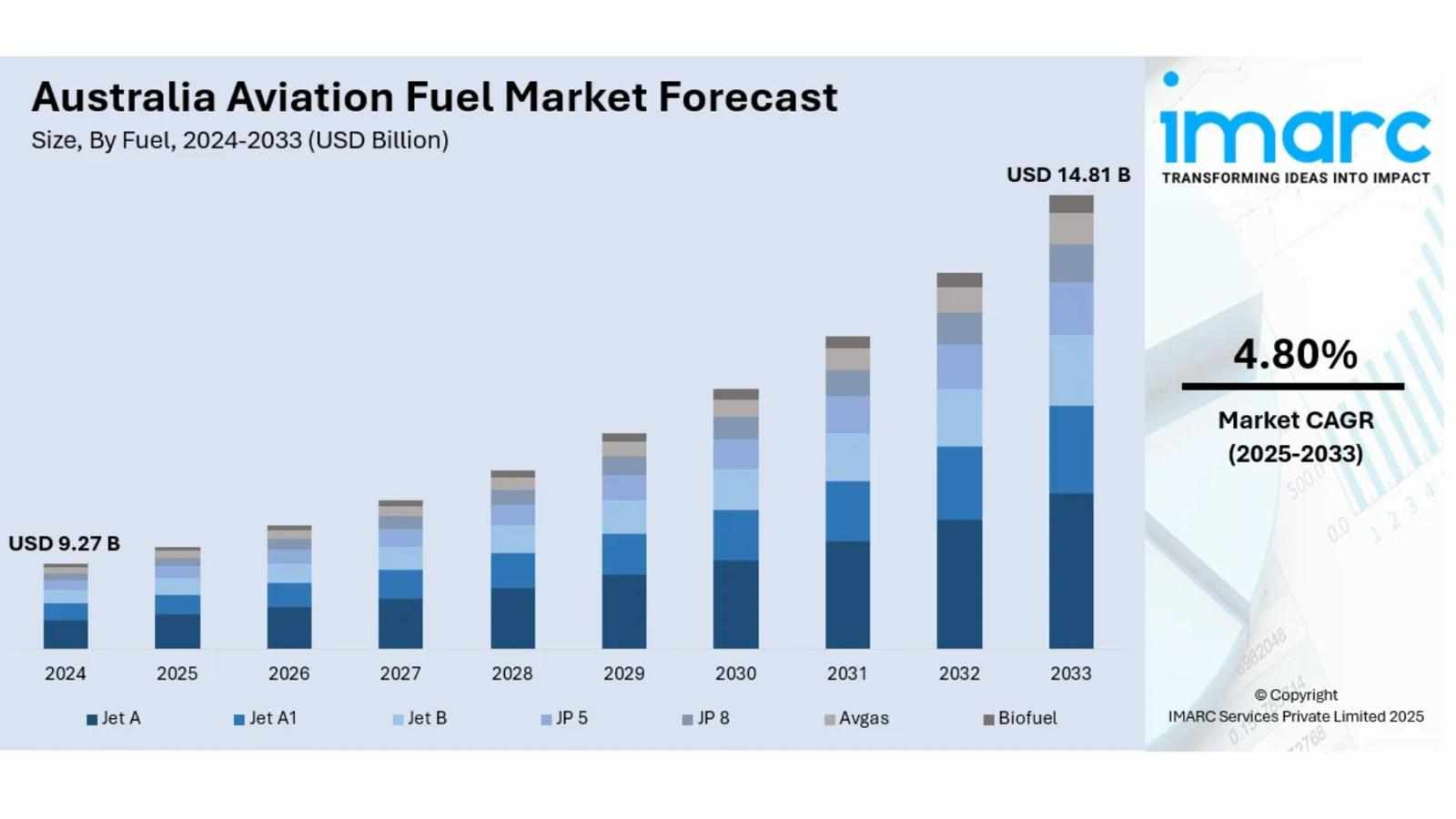
The latest report by IMARC Group, titled “Australia Aviation Fuel Market Size, Share, Trends and Forecast by Fuel, Aircraft, End Use, and Region, 2025-2033,” offers a comprehensive analysis of the Australia aviation fuel market growth. The report also includes competitor and regional analysis, along with a breakdown of segments within the industry. The Australia aviation fuel market size reached USD 9.27 Billion in 2024. Looking forward, IMARC Group expects the market to reach USD 14.81 Billion by 2033, exhibiting a growth rate (CAGR) of 4.80% during 2025–2033.
Report Attributes:
· Base Year: 2024
· Forecast Years: 2025–2033
· Historical Years: 2019–2024
· Market Size in 2024: USD 9.27 Billion
· Market Forecast in 2033: USD 14.81 Billion
· Market Growth Rate 2025–2033: 4.80%
For an in-depth analysis, you can refer to a sample copy of the report:
https://www.imarcgroup.com/australia-aviation-fuel-market/requestsample
Australia Aviation Fuel Market Overview
The market is experiencing robust growth as both international and domestic air passenger traffic is increasing.
Airlines are investing in fleet renewal, expanding their networks, and integrating more fuel-efficient aircraft to comply with evolving emission regulations.
Government support for sustainable aviation fuel (SAF) and funding mechanisms is accelerating SAF adoption and infrastructure investment.
Fuel producers, airports, and airlines are enhancing logistics and blending capabilities to accommodate conventional and sustainable fuels.
Operators are increasing flight frequencies and adding new air routes to serve growing demand, particularly in underserved regional areas.
Key Features and Trends of Australia Aviation Fuel Market
Air passenger traffic is rising as post-pandemic travel resumes and tourism recovers.
Airlines are modernizing their fleets to prioritize fuel efficiency, utilizing new aircraft models.
Policies are promoting the integration of SAF, with major biofuel initiatives underway across the sector.
Low-cost carriers and budget airlines are increasing regional air connectivity and driving market consumption.
Stakeholders are collaborating on logistics and supply chain upgrades to support blended fuel distribution.
Growth Drivers of Australia Aviation Fuel Market
Growing air passenger and tourism activity across the nation.
Fleet renewal initiatives for improved operational efficiency and emission compliance.
Government policies and investment in sustainable fuel infrastructure.
Expansion of air routes and commercial flight frequencies.
Strong recovery in cargo and passenger air traffic, boosting fuel demand.
Innovation & Market Demand of Australia Aviation Fuel Market
Airlines are deploying new-generation aircraft with improved fuel economy and lower emissions.
The government is rolling out national strategies for SAF production and supply chain readiness.
Infrastructure projects, such as bioethanol-to-SAF conversions, are being accelerated by engineering contracts and private funding.
Operators are adapting digital platforms for efficient flight planning and fuel optimization.
Market demand for low-carbon fuel solutions is rising across commercial, private, and cargo aviation segments.
Australia Aviation Fuel Market Opportunities
Scaling SAF infrastructure offers long-term margins for producers, airports, and airlines.
Regional growth in tourism creates openings for new air routes and higher fuel sales.
Expanding airport and logistics capacity can drive efficiencies in supply chain management.
More frequent upgrades to fleets create demand for advanced fuel blends.
Public-private partnerships can unlock additional funding and technology for the sector.
Australia Aviation Fuel Market Challenges
Blending tiered SAF into conventional infrastructure requires significant logistical upgrades.
High fuel costs and price volatility remain challenges for end users.
Meeting diverse emission targets across international and domestic segments is complex.
Security of supply and distribution bottlenecks may impact operational efficiency in peak periods.
Intense competition in the fuel supply market and regulatory uncertainty can constrain margins.
Australia Aviation Fuel Market Analysis
New models and routes are being evaluated with a focus on sustainability and profitability.
The integration of digital analytics is enabling real-time optimization of fuel demand.
SAF policies and incentives are shifting operating models across value chain participants.
Major aviation hubs are leading in SAF adoption and driving logistics modernization.
Competitive benchmarking is spurring innovation in efficiency, compliance, and customer experience.
Australia Aviation Fuel Market Segmentation:
By Fuel:
Jet A
Jet A1
Jet B
JP 5
JP 8
Avgas
Biofuel
By Aircraft:
Fixed Wings
Rotorcraft
Others
By End Use:
Commercial
Military
Private
Others
By Region:
Australia Capital Territory & New South Wales
Victoria & Tasmania
Queensland
Northern Territory & Southern Australia
Western Australia
Australia Aviation Fuel Market News & Recent Developments:
In January 2025, the national flight network experienced a 0.8% rise in daily flights, and Qantas announced plans to acquire 20 new aircraft for passenger expansion.
In 2025, Technip Energies was awarded a FEED contract by Jet Zero Australia Pty Ltd for a major bioethanol-to-SAF project in Townsville.
Australia Aviation Fuel Market Key Players:
Qantas Airways Limited
Jet Zero Australia Pty Ltd
Other leading regional and international fuel suppliers and airline operators
Key Highlights of the Report:
Market Performance (2019–2024)
Market Outlook (2025–2033)
COVID-19 Impact on the Market
Porter’s Five Forces Analysis
Strategic Recommendations
Historical, Current and Future Market Trends
Market Drivers and Success Factors
SWOT Analysis
Structure of the Market
Value Chain Analysis
Comprehensive Mapping of the Competitive Landscape
Note: If you need specific information that is not currently within the scope of the report, we can provide it to you as a part of the customization.
Ask analyst for your customized sample: https://www.imarcgroup.com/request?type=report&id=34033&flag=E
FAQs: Australia Aviation Fuel Market
Q1: What was the market size of the Australia aviation fuel market in 2024?
A: The market size reached USD 9.27 Billion in 2024.
Q2: What is the market forecast for 2033?
A: The market is expected to reach USD 14.81 Billion by 2033.
Q3: What is driving the growth of the Australia aviation fuel market?
A: Rising air passenger numbers, fleet upgrades, and government SAF integration policies are key drivers.
Q4: Which fuel types are covered in the market report?
A: Jet A, Jet A1, Jet B, JP 5, JP 8, Avgas, and biofuel.
Q5: What challenges does the market face in the coming years?
A: High costs, blending SAF logistics, meeting emissions targets, and competitive fuel supply landscape.
About Us:
IMARC Group is a leading market research company that provides management strategy and market research worldwide. We partner with clients in all sectors and regions to identify their highest-value opportunities, address their most critical challenges, and transform their businesses. Our solutions include comprehensive market intelligence, custom consulting, and actionable insights to help organizations make informed decisions and achieve sustainable growth.
Contact Us:
134 N 4th St. Brooklyn, NY 11249, USA
Email: sales@imarcgroup.com
Tel No: (D) +91 120 433 0800
United States: +1-201971-6302

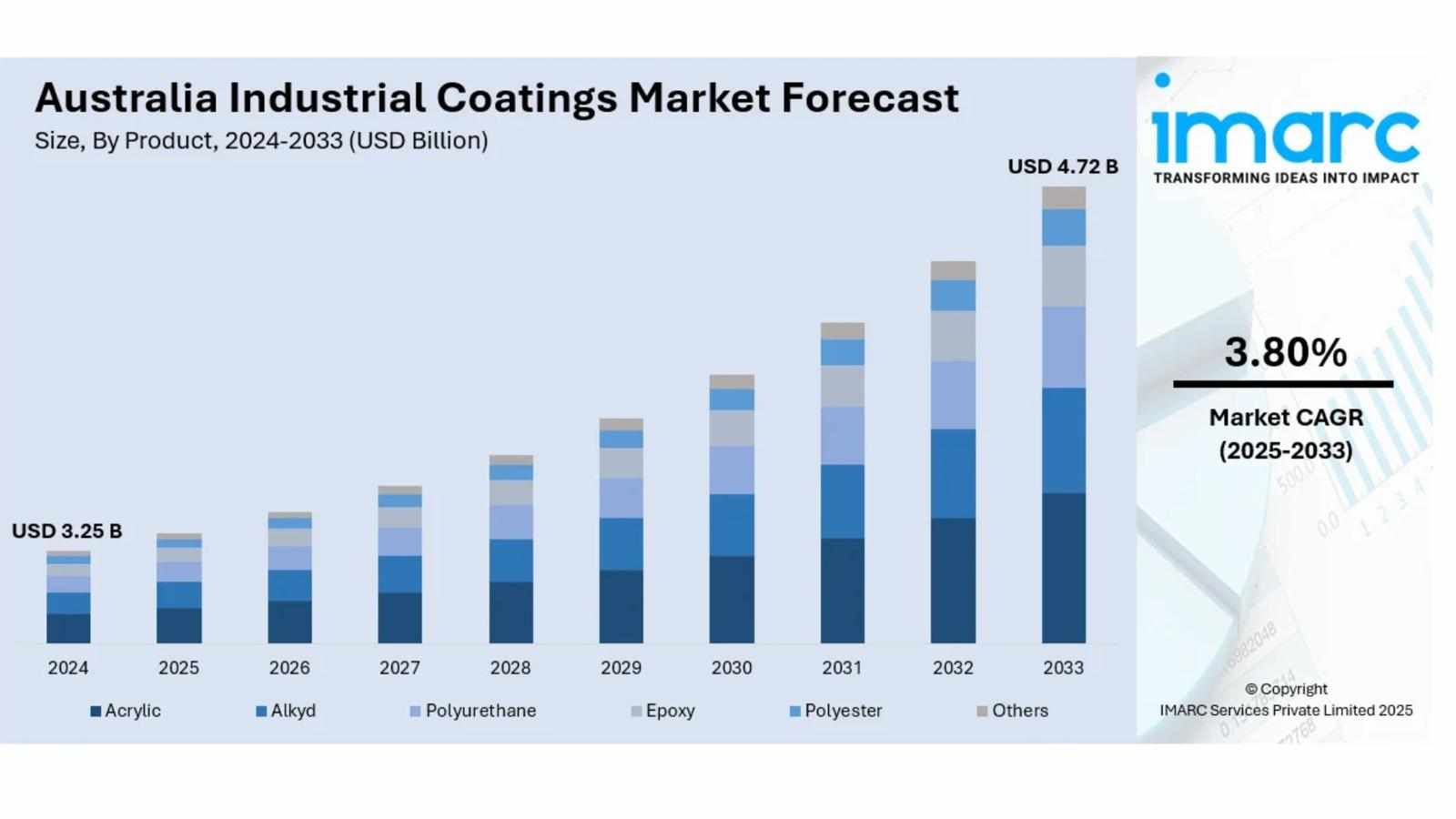
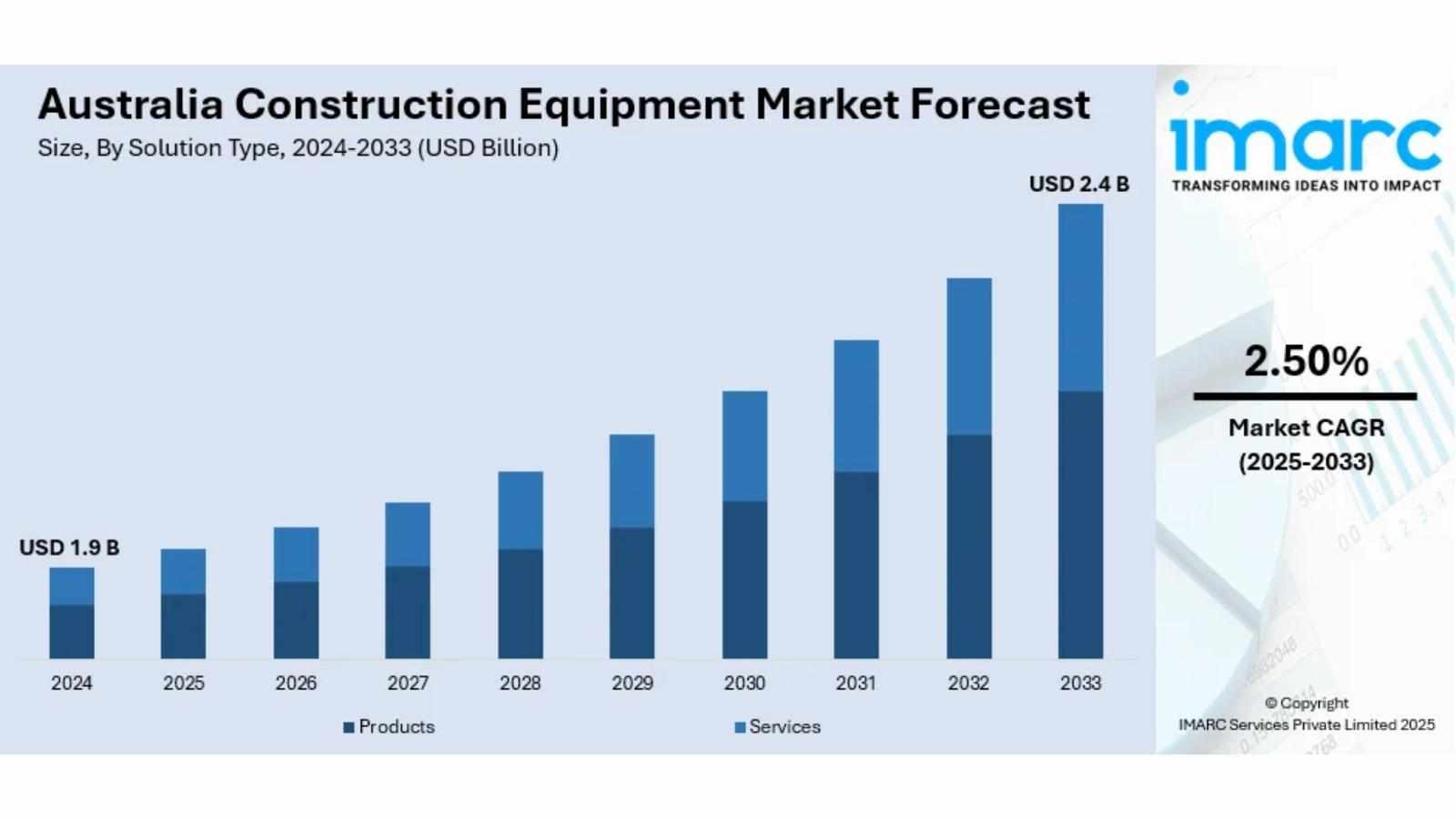
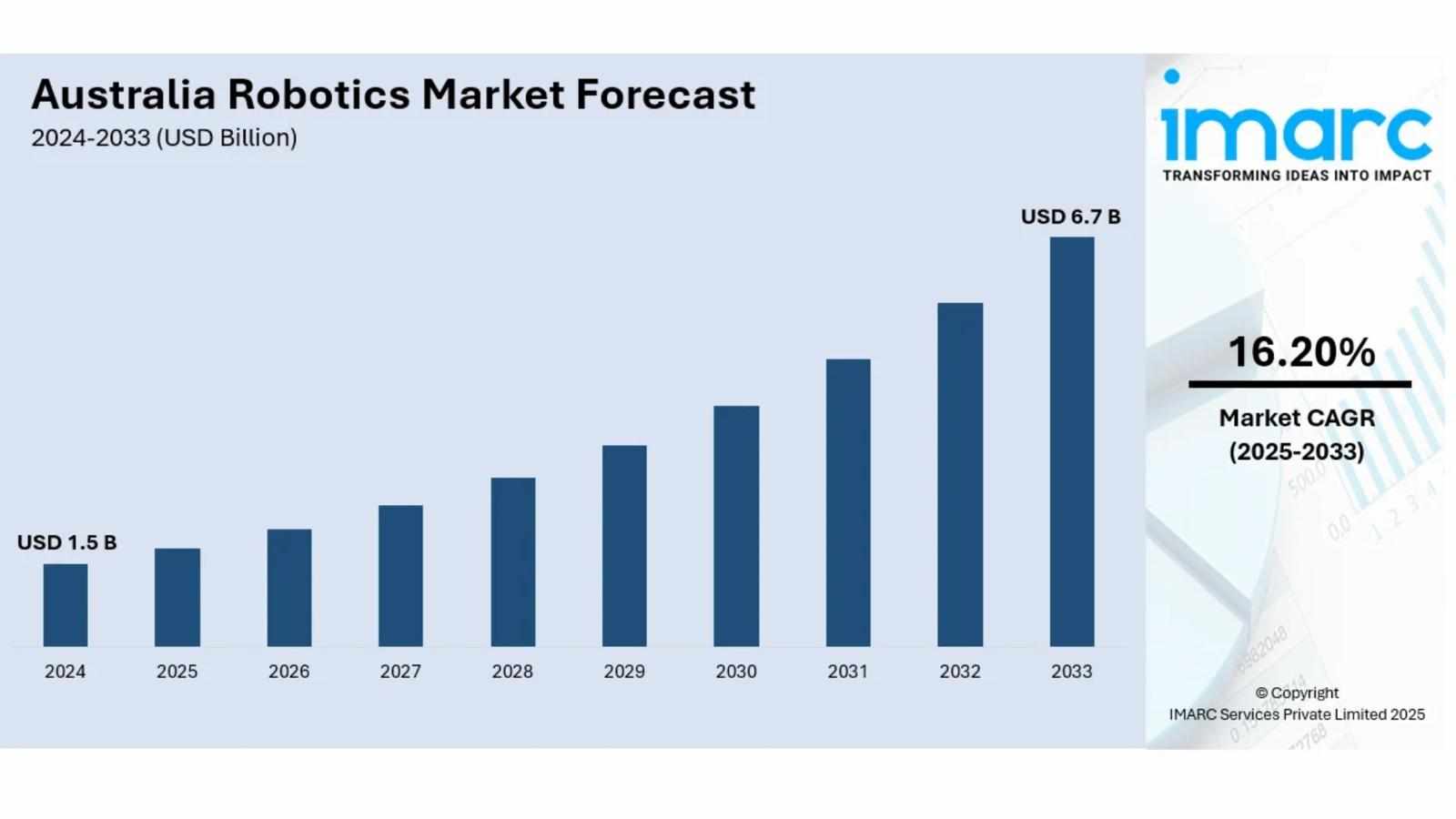
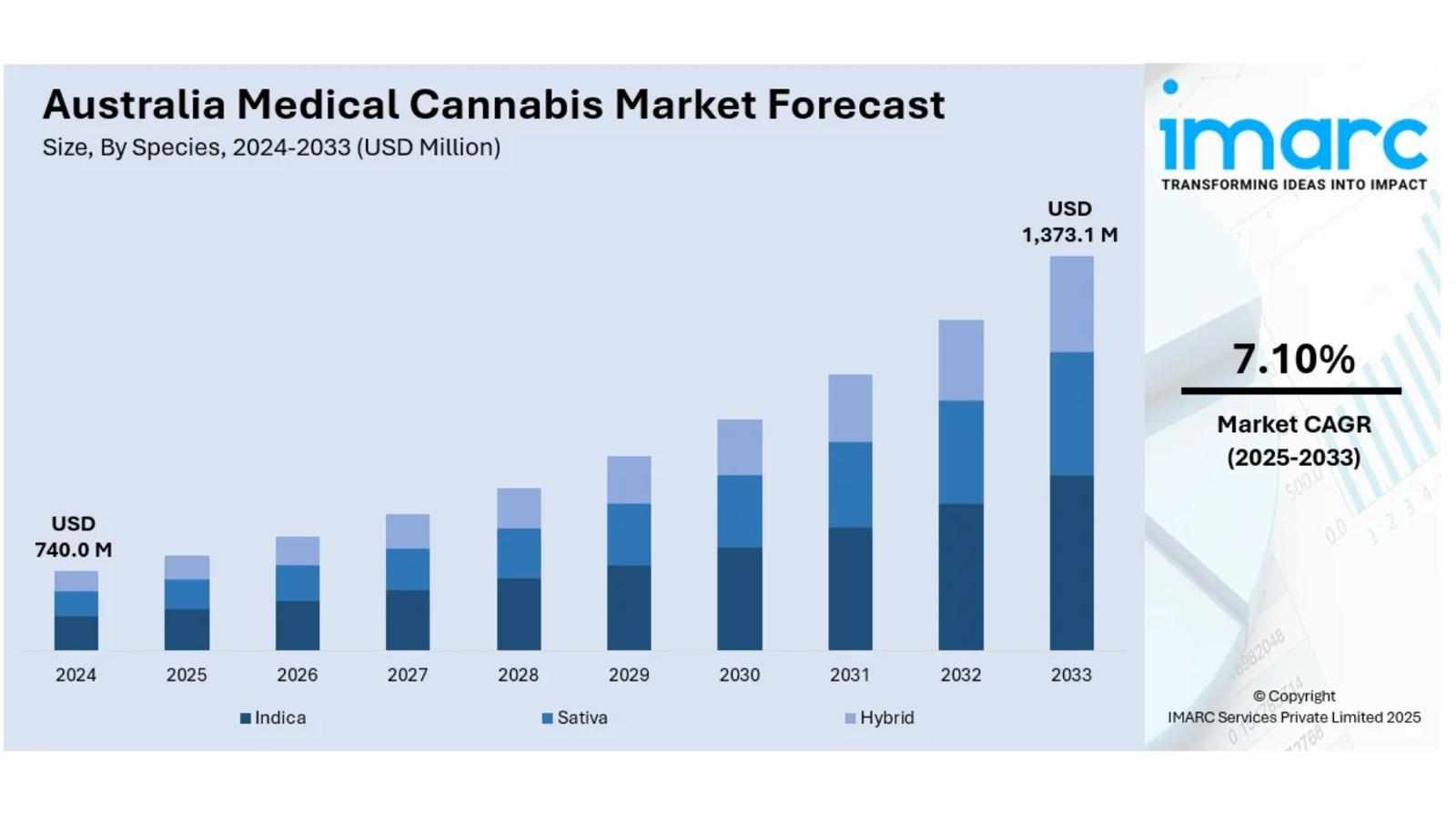
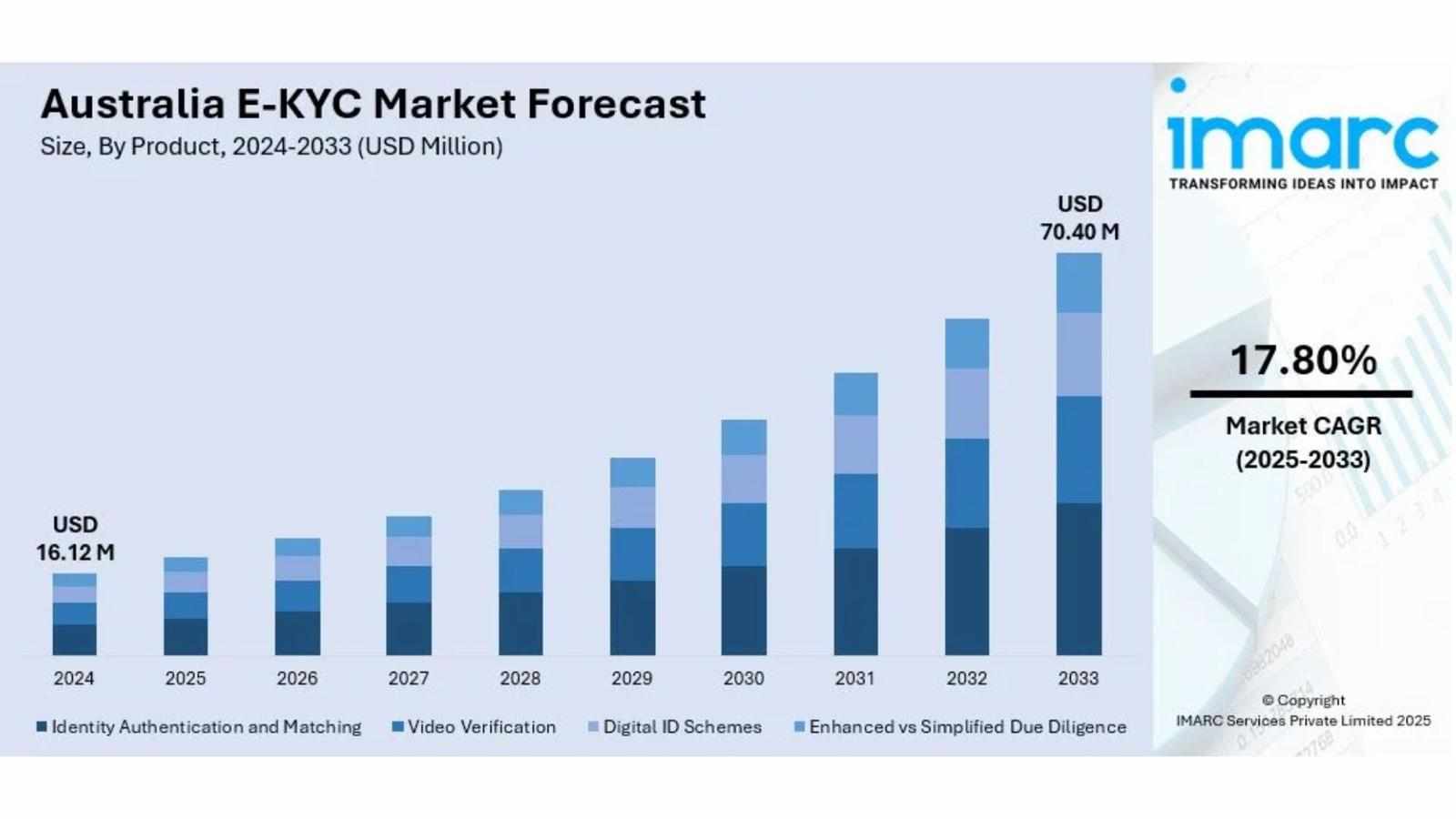
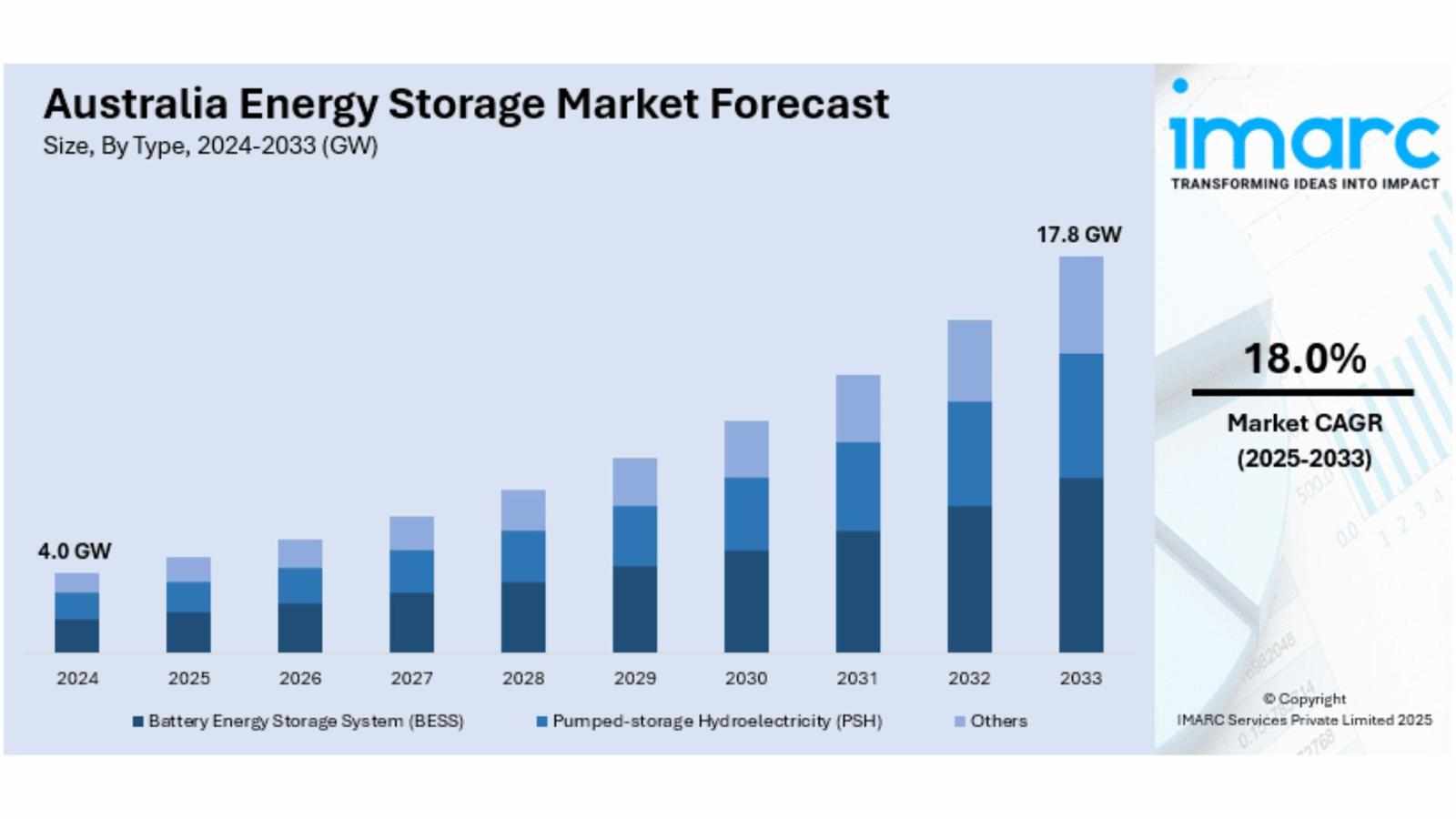
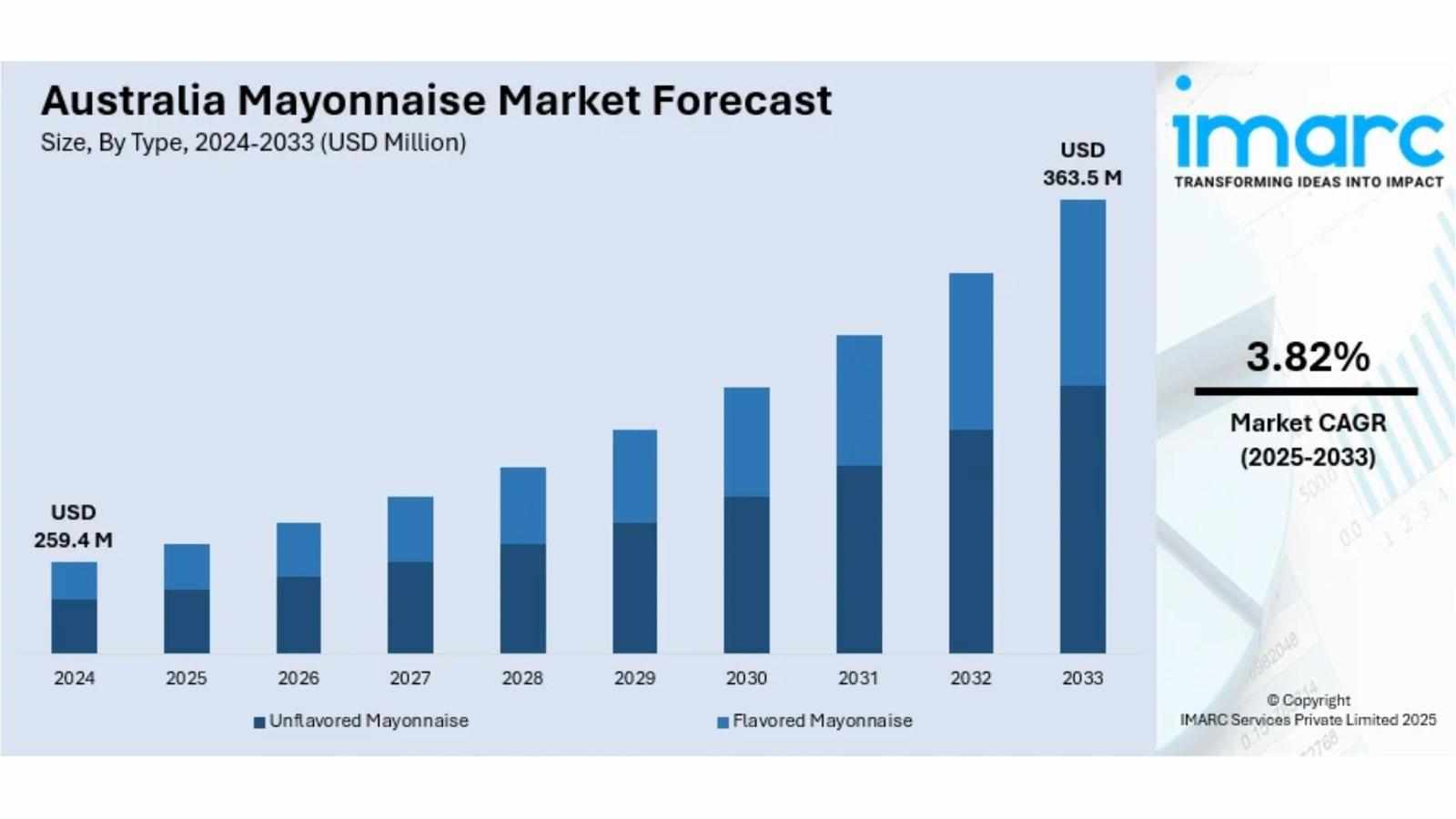
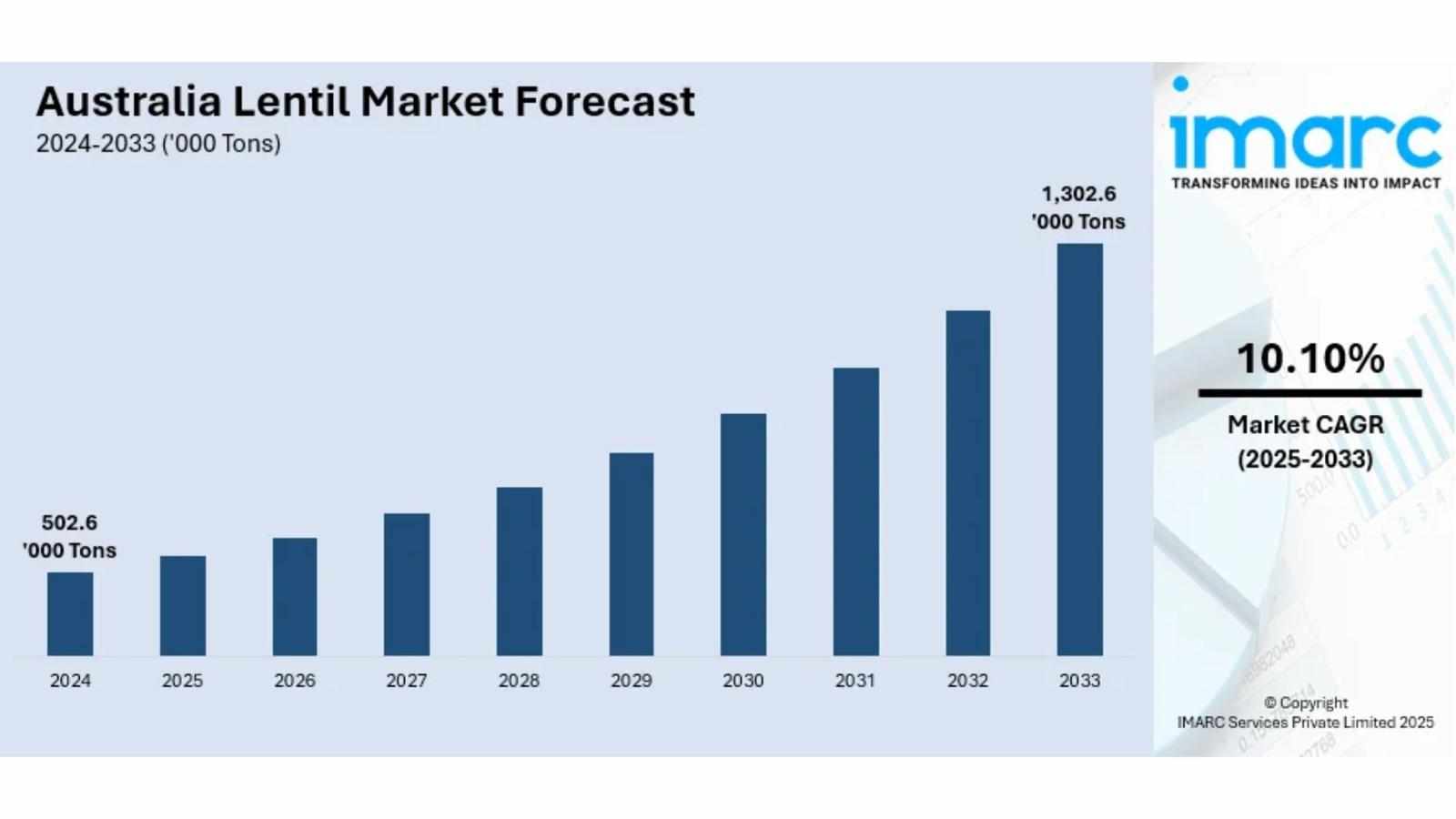
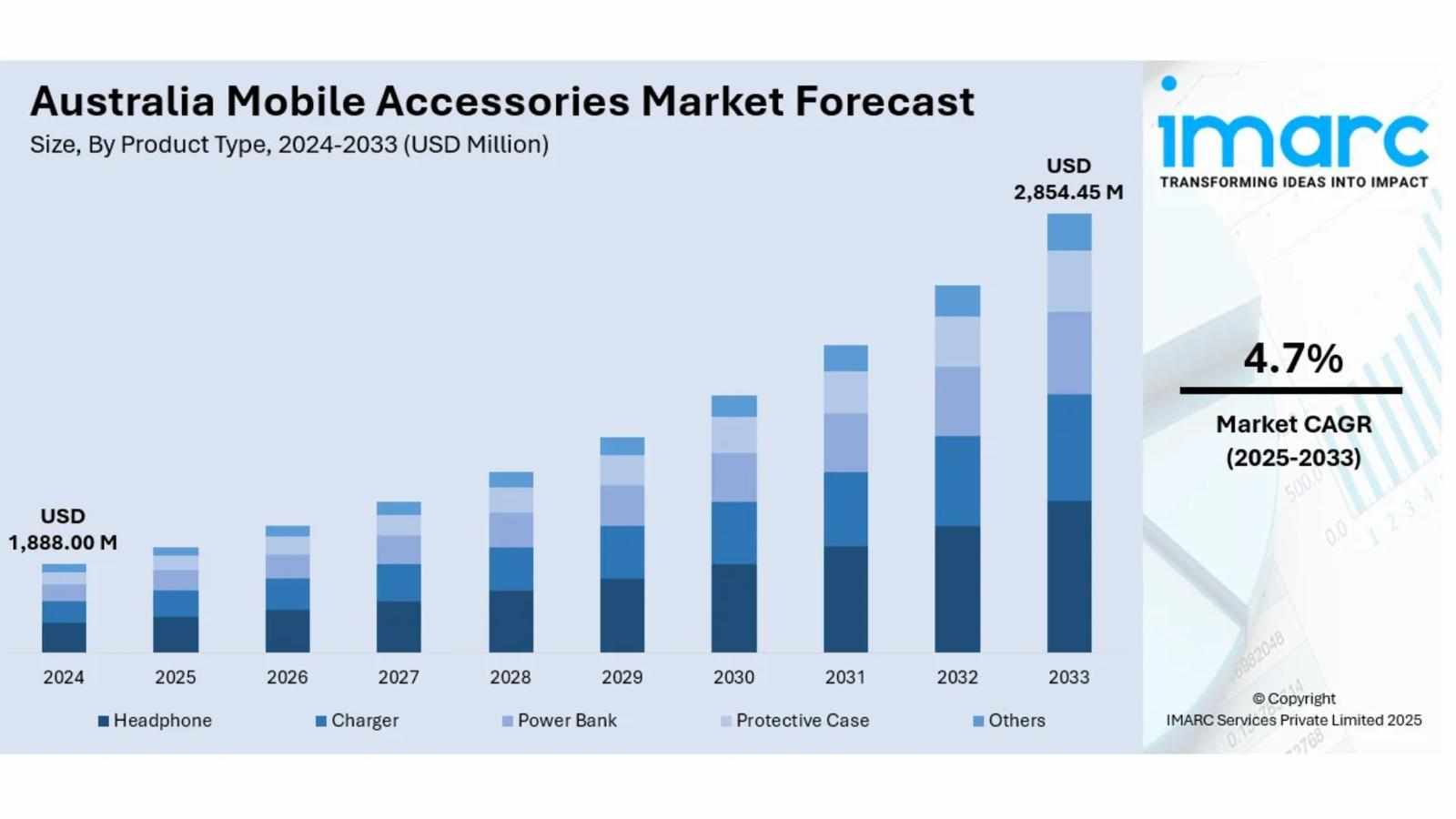
Write a comment ...